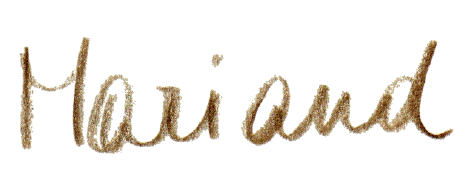We leave early in order to make the detour to visit the Himba tribe
which was on the programme for yesterday. It made much more sense to
visit them en route to Etosha rather than spend a whole day driving back
and forth. In hindsight I think that change made all the difference in
the tour, I can't thank Lindy enough for listening to our request.
We
visited a small pocket of Himba living isolated in the South, the
actual Himba tribe lives further North. Their main attraction seems to
be that the women are topless, covered in a red ocre paste including the
hair and wearing a lot of jewelry. Although it is interesting to see
people still living like that, I and many others had the distinct
feeling of visiting a zoo. It left me with a feeling of unease: white
tourists gawking at "savages". We were led into a hut where women
supposedly cleansed themselves with smoke. Contrary to the men in the tribe, the women are not allowed to use water. The English of the guide
was very bad and frankly I thought the whole thing fake. I had watched a
documentary with Frédéric Lopez on TV5 on the Himba and that was
genuine and very interesting: The TV crew stayed a week with the real
tribe and shared their lives, cooked with them, etc. The women we
visited seemed totally annoyed as they sat in a circle selling mediocre
handicrafts while being photographed by the herd of tourists. Obviously
a moneymaking enterprise.
In the early afternoon we arrived at
the Etosha Safari Lodge. A very nice lodge but with less character than
the previous one. Also, we only stayed one night and couldn’t really get
in the mood. We set out at 4PM in two jeeps eager to visit the park.
We had to drive for half an hour before arriving at the park gate. The main feature of the park is the enormous salt pan which is 150 km
long and up to 50 km wide. It only fills up sometimes during the rainy
season, November to May, but was already completely dry. The land is
open and flat with some wooded areas, the colours are beautiful: muted
pastel greens and all shades of ocre to red and mauve. It is endlessly
interesting to watch the tall grasses with their silvery tufts and try
and spy on some hidden animal. It helps to sit high up in the open jeep
or in the bus.
We saw plenty of Oryx, Springbucks, Gnus and a Jackal. Also birds: Kori
Bustards and Korhans,
The highlight of the tour was a herd of 14 giraffes giving us a sunset
spectacle. Marc was getting impatient to see his first giraffe, he was
delighted as they obliged in showing themselves in such a beautiful way.
This put everybody in a good mood for supper. Another beautiful day,
how lucky we are.
 |
| Last super breakfast at Camp Kipwe |
 |
| Meditation |
 |
| Camp Kipwe to Etosha, 450 km |
 |
| Google Earth view of our drive to Etosha |
 |
| Rugged terrain |
 |
| Crossing the Huab river |
 |
| The Huab river after the rain |
 |
| Arriving at the Himba village |
 |
| The school building |
 |
| A well organized teacher |
 |
| With our local guide |
 |
| Marc-André shows the children their photos |
 |
| Demonstrations by the Himba women |
 |
| A beautiful lady |
 |
Inside the hut, a demonstration of "smoke cleansing".
We managed to get a smile |
 |
| The men's hut. Note the solar cells; they're watching TV |
 |
| Himba women selling their handicrafts |
 |
| What am I doing in the middle of the circle? | | | |
|
|
 |
| Etosha Safari Lodge |
 |
| Google Earth view of the Lodge site |
 |
| The cabins |
 |
| Our room |
 |
| Safari ride through the park, 70 km |
 |
| Our first giraffe |
 |
| Oryx |
 |
| Ground squirrel |
 |
| Northern Black Kurhan |
 |
| Gnu |
 |
| Jackal |
 |
| Springbock |
 |
| Kori Bustard |
 |
| Kori Bustard showing off |
 |
| Giraffe galore |







































Aucun commentaire:
Publier un commentaire